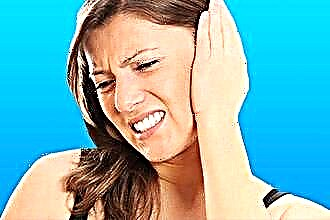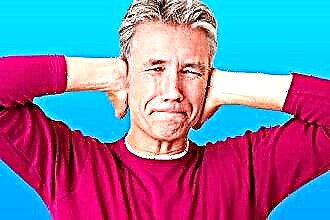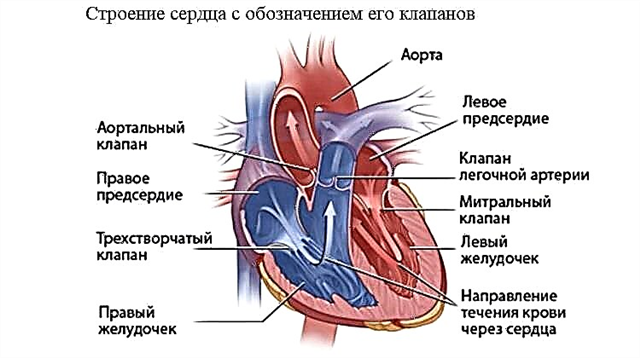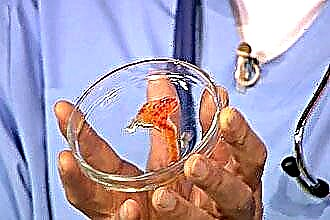The ear is the organ of perception that is most susceptible to external influences. Decrease or increase in intracranial pressure, vascular pathology, inflammatory processes, ingress of water into the ear canal, foreign bodies are the main causes of ear congestion. Among the most common non-infectious factors of ear congestion are hypertension and hypotension.
During an attack, the patient, in addition to hearing discomfort, may be accompanied by pain.
This phenomenon is quite common and, in most cases, is provoked by the influence of environmental factors. Moreover, after the elimination of their action, the congestion disappears without a trace. You also need to remember that the condition can be a symptom of a number of pathological conditions, and is leveled after treatment of the causative disease.
What are the reasons for the feeling of stuffy ears and what is the mechanism for the development of symptoms?
A patient's ear congestion manifests itself in a wide range of subjective sensations:
 Distortion of phonation self-perception (does not recognize its own voice);
Distortion of phonation self-perception (does not recognize its own voice);- Reduction of the baseline sound background (one- and two-sided), which can force the patient to listen;
- Feeling of heaviness of the head ("cast iron");
- Attachment of third-party background noise, buzz not associated with external sounds ("tinnitus");
- The echo of your own voice;
- The illusion of a foreign body in the ear.
Symptom development mechanisms:
- The pressure difference on both sides of the tympanic membrane. For normal auditory perception, it is necessary to maintain the pressure in the middle ear identical to atmospheric pressure. This function is performed by the Eustachian tube, which normally opens with each swallowing. With various kinds of obstruction of the lumen of the tube, the pressure in the middle ear cavity increases (clinically - lays the ears).
- Distortion of sound perception and impulse transmission along the path "receptors of the inner ear - auricular nerve - auditory cortex of the brain."
Causes of ear congestion:
- Natural - a sharp drop in atmospheric pressure (moving by high-speed elevator, airplane, metro, climbing mountains, diving to a depth);
- vascular diseases (aneurysm, vertebrobasilar insufficiency, migraine); - drops in blood pressure (often hypertension);
- widespread atherosclerosis;
- sulfur plugs;
- cholesteatoma;
- consequences of TBI, stroke, tumors of the temporal lobe;
- Meniere's disease, otosclerosis;
- dysfunction of the temporomandibular joint (habitual dislocation, fracture).
What is the most common pressure for ear clogs: high or low?
Ear congestion is disproportionately more common in patients with high blood pressure.
 This symptom is more common in patients with a complicated course of hypertension (frequent crises, hypertensive encephalopathy), a combination of hypertension with widespread atherosclerosis, osteochondrosis of the cervical spine.
This symptom is more common in patients with a complicated course of hypertension (frequent crises, hypertensive encephalopathy), a combination of hypertension with widespread atherosclerosis, osteochondrosis of the cervical spine.
The pathogenetic basis of atherosclerosis is the deposition of cholesterol plaques on the vascular walls, which narrow the lumen and slow down blood flow (including to the auditory analyzer). The entire structure of the brain suffers from hypoxia and, in addition to congestion, the patient complains of hearing loss, memory impairment, dizziness, and vision problems.
With osteochondrosis, outflow from the venous sinuses becomes difficult, which increases intracranial pressure. Combined with changes in blood pressure, this causes congestion in the ears. Additionally, patients may complain of dull bursting pains in the back of the head, neck, crunching when turning and tilting the head.
Hypotension
The phenomena of arterial hypotension mainly accompany the VVD in a hypokinetic type (with a predominance of parasympathetic stimulation).
The cause of ear congestion is a slowdown in the outflow of blood through the veins due to a violation of the autoregulation of the vascular wall tone, which provokes an increase in intracranial pressure.
Additional signs of hypotension:
- Loss of strength, chronic fatigue, drowsiness;
- Weakening of concentration, memorization;
- Meteosensitivity;
- Visual disturbances (dark spots, flies in front of the eyes) due to orthostatic hypotension;
- Depression tendency, apathy.
Hypertension
Essential hypertension is a sustained increase in pressure (systolic and / or diastolic) caused by the predominance of pressor mechanisms and insufficiency of depressive reactions, which is accompanied by secondary pathology of target organs (heart, brain, kidneys, retina).
 With high pressure, it clogs up the ears due to:
With high pressure, it clogs up the ears due to:
- Influence of pathological impulses of the hypothalamus, arising from stress, on the sympathetic plexuses of the vascular wall, which enhance the motor component of the arteriole tone;
- Renal factor - synthesis of angiotensin II by the juxtaglomerular apparatus of the kidneys in response to vasoconstriction, which causes even greater vasoconstriction, accumulation of sodium and fluid in their wall, which leads to edema and narrowing of the lumen of arterioles.
Congestion in the ears due to spasm of cerebral arterioles may be the first symptom to suspect hypertension.
Further, the following signs join:
- Vertigo, nausea, insomnia;
- Pathognomonic headaches - dull, bursting in the occiput, temples, mainly in the morning;
- Noise in ears;
- Swelling of the lower extremities;
- Visual impairment (double vision, flies);
- Discomfort in the pericardial region;
- Numbness in the arms or legs.
If the patient is dizzy and ears are blocked at high pressure, the development of a formidable complication is likely - hypertensive encephalopathy.
What should a patient do when these symptoms appear?
Occasional ear congestion caused by sudden surges in atmospheric pressure does not require medical attention. Subject to the elimination of the influencing factor, hearing is completely restored on its own.
The reason for immediate medical attention requires tinnitus, which is accompanied by:
 Persistent mono- or biaural hearing loss;
Persistent mono- or biaural hearing loss;- Vertigo with impaired coordination of movements, episodes of disorientation;
- Headache attacks with visual disturbances;
- Pain in the pericardial region, under the scapula, palpitations, rhythm disturbances;
- An increase in body temperature accompanied by nausea, severe headaches;
- Episodes of loss of consciousness, convulsions;
First of all, it is worth contacting a therapist, who, after finding out the anamnesis and examining the patient, will prescribe additional examinations:
- Clinical blood test, coagulogram;
- Daily monitoring of blood pressure, ECG, consultation with a cardiologist;
- EEG, REG;
- CT, MRI of the brain, cervical spine;
- ENT consultation, audiogram;
- Examination by a neurologist or neurosurgeon, angiography of cerebral vessels.
Conclusions
Persistent phenomena of ear congestion require a thorough diagnostic search in order to identify the causal pathology that causes this symptom. In some cases, ear congestion is caused by ototoxic drugs (loop diuretics, some antibiotics) or excessive noise exposure, especially through headphones. Having established the root cause, the specialist will be able to choose an effective treatment regimen, taking into account the patient's age and the presence of concomitant diseases.

 Distortion of phonation self-perception (does not recognize its own voice);
Distortion of phonation self-perception (does not recognize its own voice); Persistent mono- or biaural hearing loss;
Persistent mono- or biaural hearing loss;

